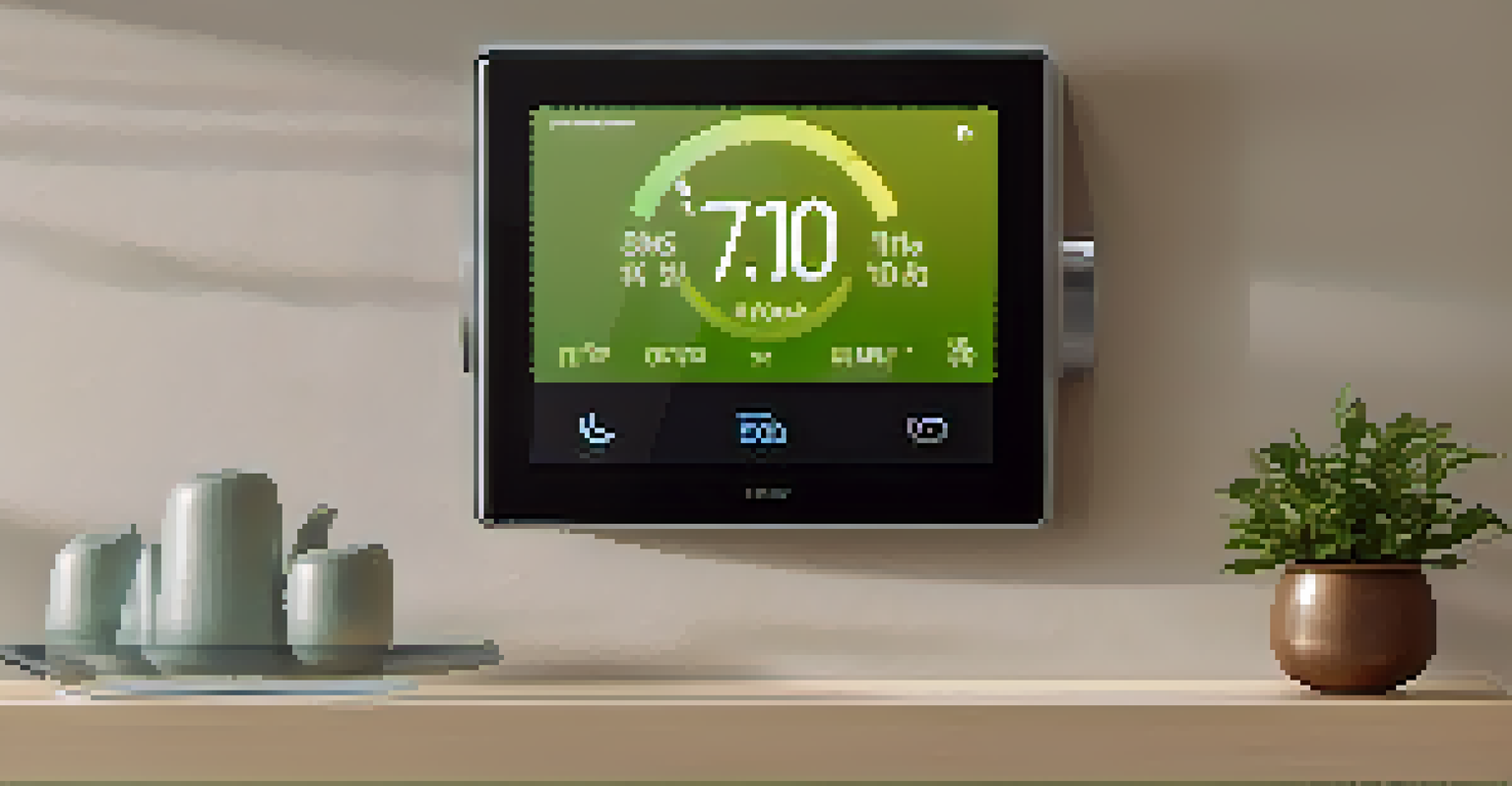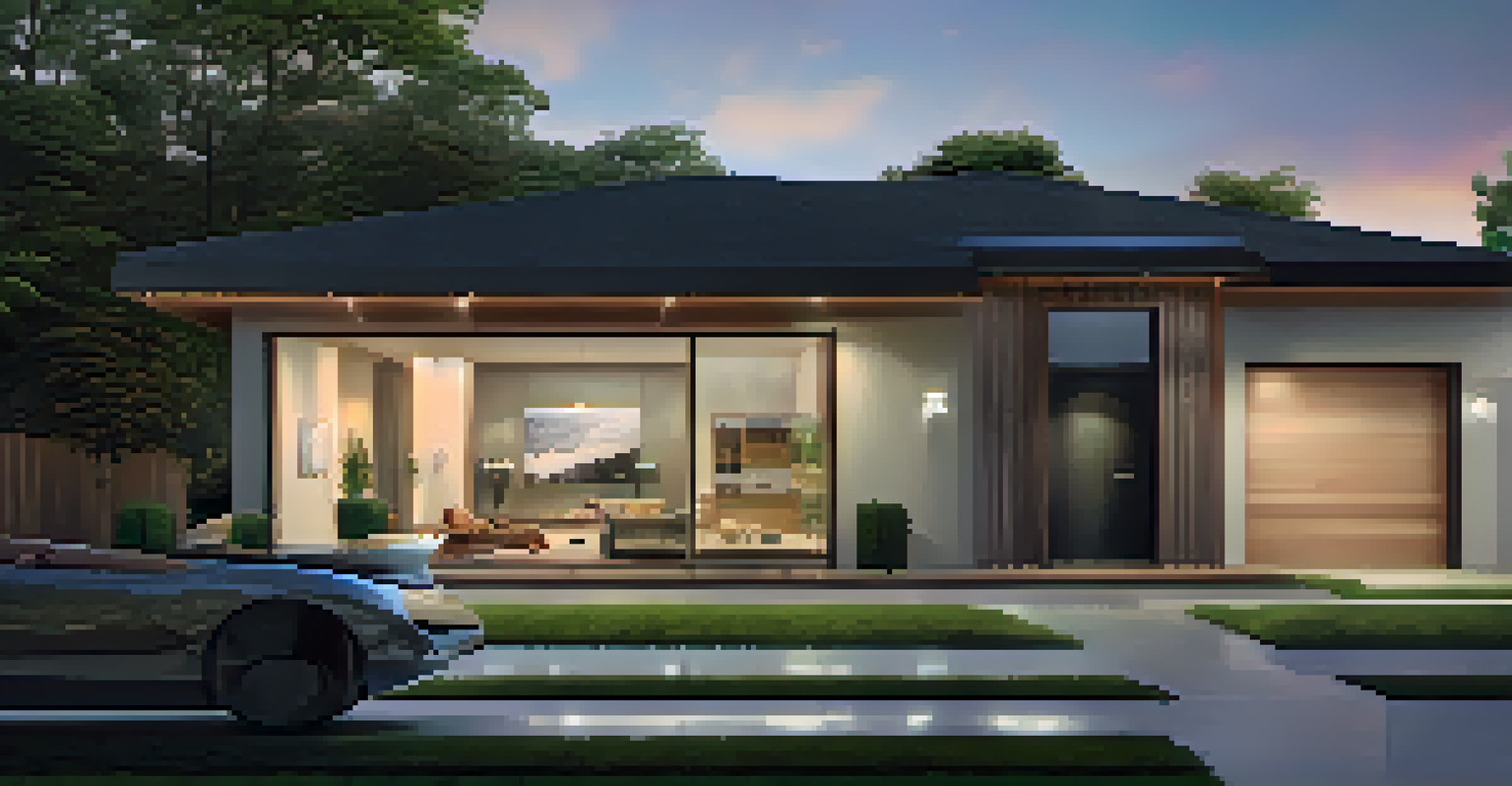How to Incorporate Smart Technology in Home Renovations

Understanding Smart Technology for Home Renovations
Smart technology refers to devices that connect to the internet, allowing you to control them remotely or automate their functions. Incorporating these technologies into your home renovation can enhance convenience, security, and energy efficiency. Think of them as the brain behind your house, making life easier and more efficient.
The future is already here — it's just not very evenly distributed.
As you plan your renovation, consider what smart technologies can streamline your daily routines. For example, smart thermostats can learn your preferences and adjust heating or cooling automatically, saving you energy and money. The goal is to create a home that not only looks great but also functions seamlessly.
Understanding the basics of smart technology will help you determine which devices suit your lifestyle. From smart lighting systems that adjust to your mood to home security cameras that give you peace of mind, the options are vast. The right tech can transform your space into a modern sanctuary.
Assessing Your Home's Current Infrastructure
Before diving into renovations, take a close look at your home’s existing infrastructure. Smart devices often rely on a reliable Wi-Fi network, so ensure your internet service can handle the additional load. This might mean upgrading your router or installing a mesh network for better coverage.

You'll also want to consider the electrical system. Some smart devices may require more power or specific wiring, especially if you're adding features like smart lighting or motorized blinds. A thorough assessment helps avoid surprises and ensures a smoother installation process.
Smart Tech Enhances Home Comfort
Incorporating smart devices like thermostats and lighting systems into renovations can significantly improve comfort and convenience in your home.
This groundwork will not only save you time and trouble but also help you make informed decisions about which smart technologies to incorporate. By understanding your current setup, you can choose devices that seamlessly integrate into your home, creating a cohesive environment.
Choosing the Right Smart Devices for Your Needs
With countless smart devices available, it’s essential to select those that align with your lifestyle. Consider your daily routines and identify areas where technology can enhance convenience. For instance, if you often forget to turn off lights, smart bulbs with motion sensors might be the perfect fit.
Technology is best when it brings people together.
Think about your family's unique needs as well. If you have young children or elderly family members, smart security cameras or monitoring systems can provide an extra layer of safety. Choosing the right devices will make your home not just smarter, but also more accommodating.
Don't forget to evaluate compatibility between devices. The best smart homes feature devices that work well together, often controlled by a single app or voice assistant. This interconnectedness makes it easy to manage your home’s technology, adding to the overall convenience.
Incorporating Smart Lighting Solutions
Smart lighting is one of the simplest and most impactful ways to incorporate technology into your renovation. Imagine walking into a room and having the lights automatically adjust to your preferred brightness and color. This not only enhances ambiance but can also contribute to energy savings.
Consider installing smart switches or bulbs that you can control via smartphone or voice commands. This allows for easy adjustments whether you’re at home or away, making it perfect for security as well. Plus, you can create schedules or routines, like having your lights dimmed for movie night.
Ensure Infrastructure Compatibility
Assessing your home's existing infrastructure is crucial for successfully integrating smart technology without unexpected challenges.
When planning your renovation, think strategically about where to place these smart lighting solutions. Highlighting architectural features or creating layered lighting can transform your space, making it not just functional but also visually stunning.
Enhancing Home Security with Smart Technology
Home security is a top priority for many homeowners, and smart technology can significantly enhance your protection. Consider installing smart doorbell cameras that let you see and speak to visitors from your smartphone. It’s a simple yet powerful way to increase your home’s security.
Smart locks are another excellent addition, allowing you to lock or unlock your doors remotely. This means you can grant access to family or service providers without being home. You can also receive alerts when someone enters your home, keeping you informed at all times.
When renovating, think about where to place security cameras and motion sensors for optimal coverage. A well-planned security setup can deter potential intruders and provide peace of mind for you and your family.
Improving Energy Efficiency with Smart Thermostats
Smart thermostats are a game-changer when it comes to energy efficiency in your home. These devices learn your heating and cooling preferences and adjust automatically, ensuring your home is always at the perfect temperature while saving energy. Imagine coming home to a warm house without having to leave the heating on all day.
During your renovation, consider integrating a smart thermostat into your heating and cooling system. Many models allow you to control your home’s temperature remotely via a smartphone app, giving you total flexibility. This not only enhances comfort but can also lead to significant savings on energy bills.
Prioritize Security with Smart Devices
Smart security solutions, such as doorbell cameras and smart locks, can enhance your home’s safety and provide peace of mind.
Additionally, some smart thermostats provide insights into your energy usage, helping you make informed decisions about your consumption. By improving energy efficiency, you’re not just benefiting your wallet; you’re also contributing to a more sustainable future.
Integrating Smart Home Hubs for Seamless Control
A smart home hub acts as the central command center for all your smart devices. Instead of juggling multiple apps, a hub lets you control everything from one place, making your life much simpler. Think of it as the remote control for your entire home’s technology.
When planning your renovations, consider where to install your smart home hub for optimal connectivity. Ideally, it should be centrally located to ensure all devices are within range. This will enhance the efficiency of your system, allowing for seamless communication between devices.

Additionally, many hubs offer voice control capabilities, which can add a layer of convenience. Imagine walking into your home and saying, 'Turn on the lights' or 'Set the thermostat to 72 degrees.' This integration not only simplifies your daily routine but also creates a more cohesive smart home experience.